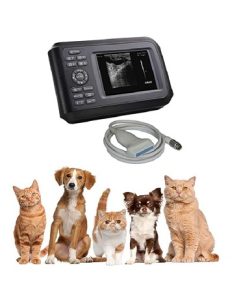Role of vet ultrasound in animal pregnancy examination
Detailed function description of the veterinary ultrasound machine for animal pregnancy examination:
1. Check whether the animal is conceived successfully
2. Observe embryonic development: Judge the embryonic development by observing the changes of the fetus’s external structure and internal structure.
3. Monitoring the life and death of the fetus: Using ultrasound to detect the heartbeat of the fetus can predict the life and death of the fetus. Before the embryo dies, the heartbeat is significantly reduced. Fetal movement disappears, the fetal sac is filled with dark areas of liquid, the embryo cannot be seen, the echo in the uterus is disordered, and the fetal sac, placenta, and fetal structure cannot be distinguished, all indicating embryonic death.
4. Fetal heart rate and its pulsation: Fetal heart rate can be calculated by measuring fetal heart or fetal arterial pulsation (including umbilical cord artery-referred to as fetal blood sound).
5. Identify the sex of the fetus: Using ultrasound to detect the positional relationship between the reproductive structure of the fetus and the surrounding structures can accurately identify the sex of the fetus. 50 to 105 days after the cattle are bred, the accuracy of identifying the sex of the fetus is 96%.
6. Estimate the number of pregnancies and predict the gestational age: Estimating the number of pregnancies is mainly used for animals with multiple births. B-ultrasound can also judge the size of the fetus with a high degree of accuracy, and can predict the date of calving based on the size of the fetus. The diameter of the fetal sac can be used to roughly estimate the size of the gestational age. It is also useful to determine the gestational age by the diameter of the choriocyst cavity and the diameter of the uterus.


